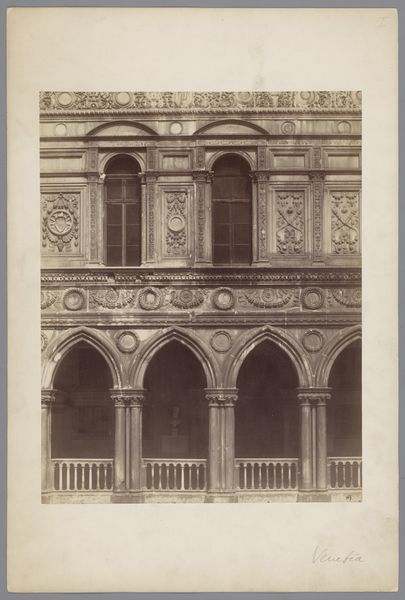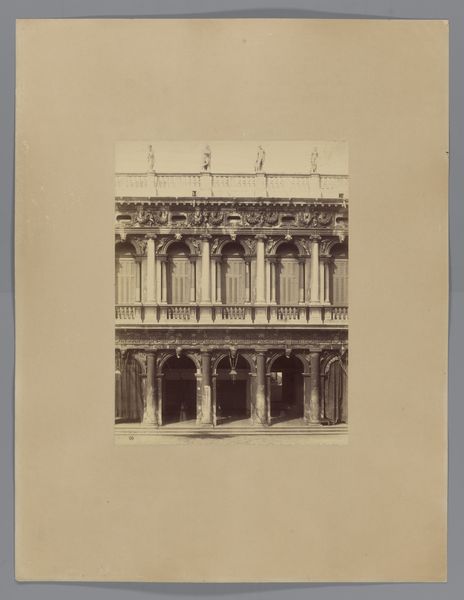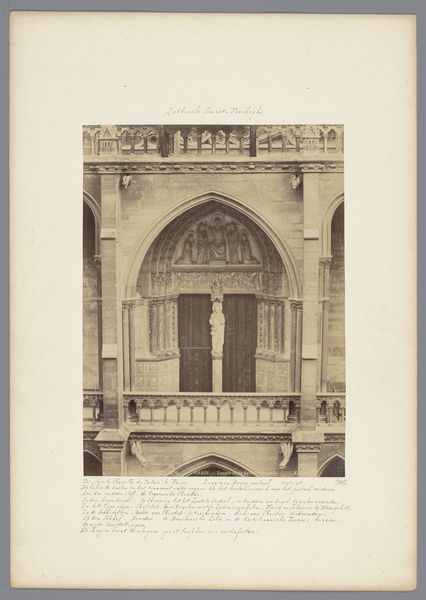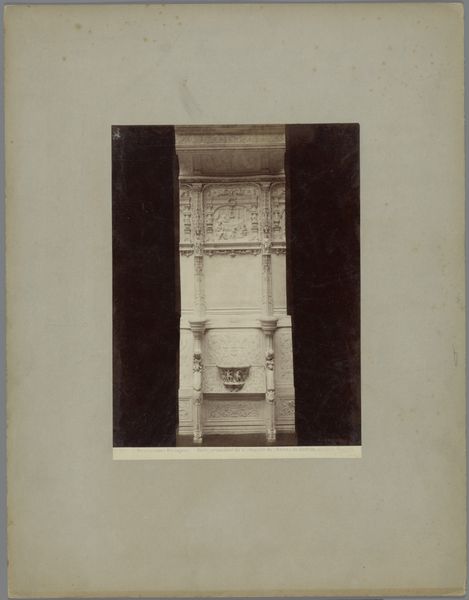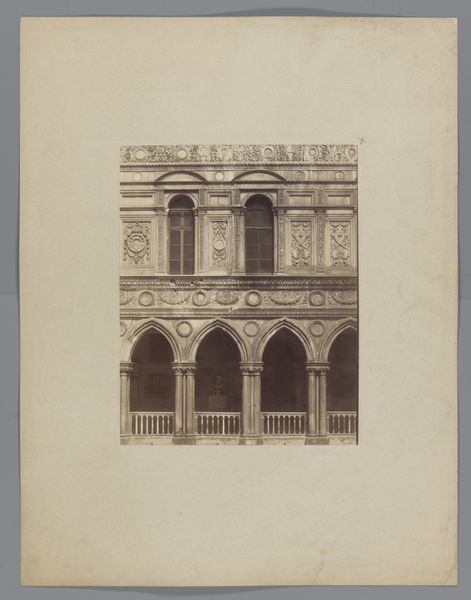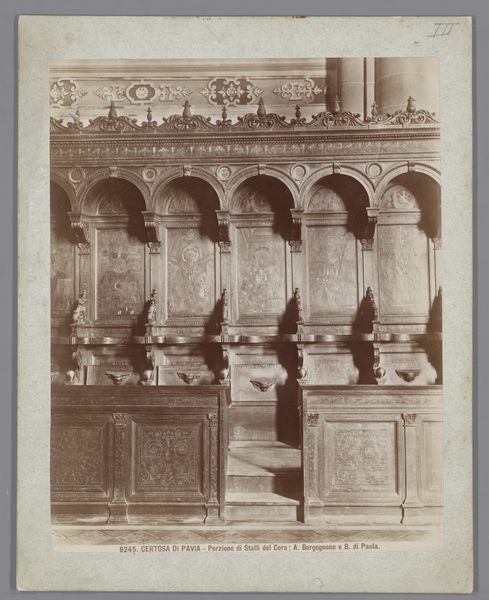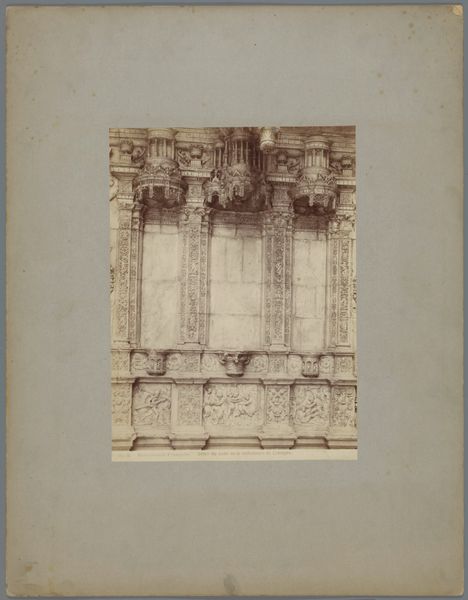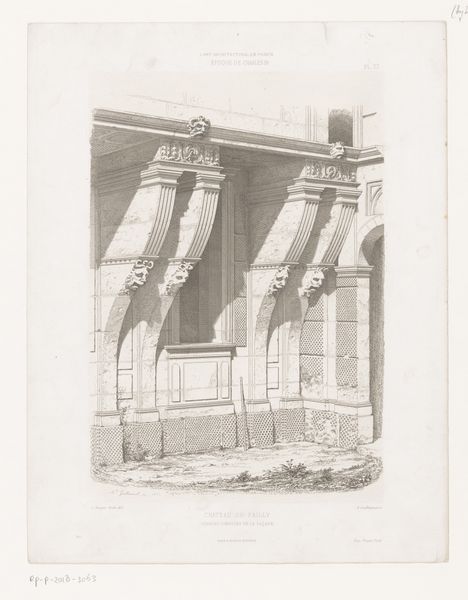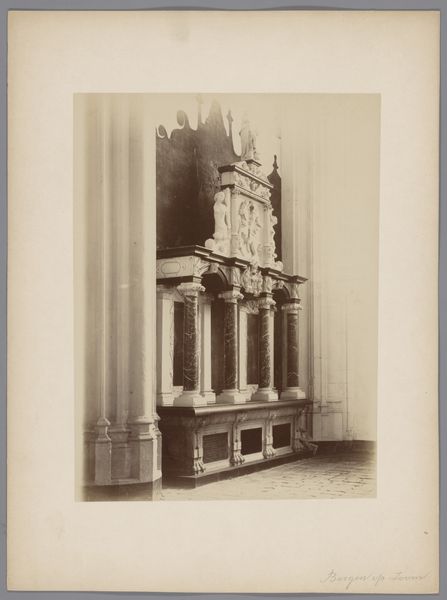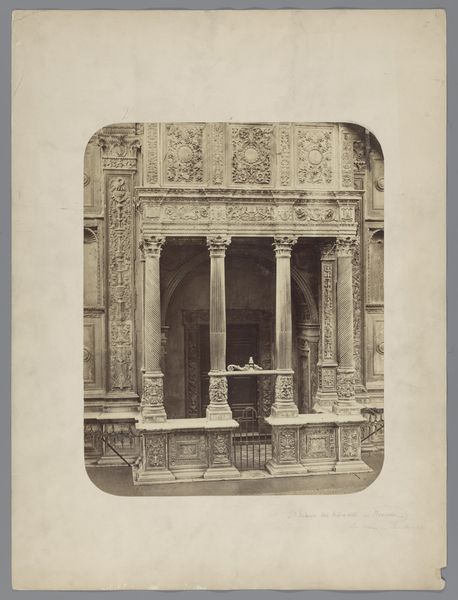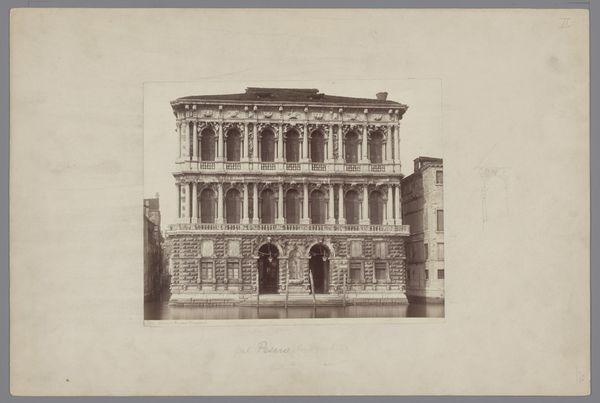
photography, gelatin-silver-print, albumen-print, architecture
#
photography
#
gelatin-silver-print
#
19th century
#
cityscape
#
italian-renaissance
#
albumen-print
#
architecture
Dimensions: height 425 mm, width 365 mm
Copyright: Rijks Museum: Open Domain
Curator: This gelatin-silver print by Giacomo Rossetti, dating back to around 1870, presents the Palazzo Communale in Brescia. Editor: It evokes a strange stillness, almost a melancholic feeling. The architecture is monumental, but the tone seems faded, as if time is suspended. Curator: Indeed. Looking at it through a historical lens, photographs like these played a vital role in shaping perceptions of Italian Renaissance architecture during the 19th century. They weren't just documentation; they were carefully constructed representations of power and civic pride. Editor: Right, and consider how the Palazzo itself—the very stone—became a signifier in constructing national identities. Was the narrative accessible, though? Who were these symbols *for*, and were they exclusionary, or did they reflect any form of social equity? Curator: That's a crucial question. This particular print, circulated via albumen prints, likely catered to an upper-middle class audience who had the leisure to collect such images and reflect on notions of Italian heritage and urbanism. The image would have helped them consolidate class and cultural authority. Editor: There's something profoundly colonial, too, in the way this photographic record freezes the space and time. Tourism becomes its own form of claiming territory, with each snapshot capturing its version of cultural ownership, suppressing a multi-faceted reality. Curator: Absolutely, this wasn't just about documenting, it was about constructing a very specific, perhaps idealized version of Italian civic life. Consider how these photographic documents impacted city planning in the latter half of the 19th century. The image becomes both a record and a prescriptive ideal. Editor: Exactly, making this much more than just a beautiful picture of the past; it's a mirror reflecting contemporary dynamics of representation. Understanding this helps unravel so many layers within something that might at first look very classical and innocent. Curator: Yes, and looking beyond the surface, exploring the political and cultural contexts surrounding this photograph, we find that art continually engages in societal discussions. Editor: Agreed. Even static photographs such as this offer valuable ways for analyzing our understanding of social dynamics.
Comments
No comments
Be the first to comment and join the conversation on the ultimate creative platform.
